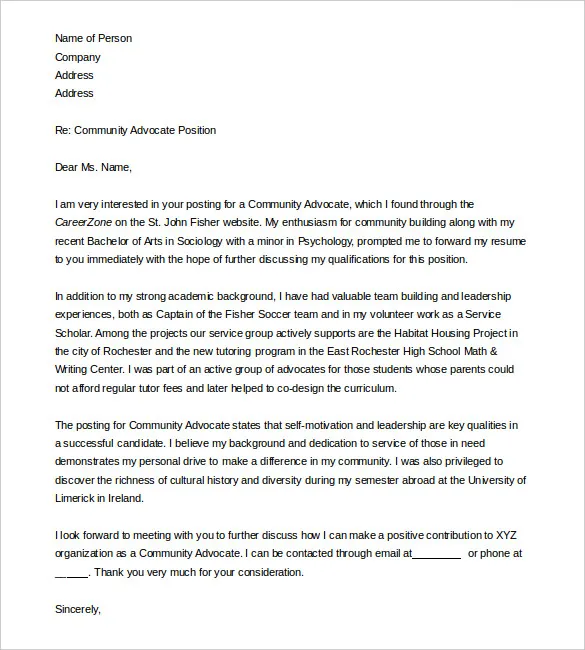Cover Letters for Nonprofits Why They Matter
In the competitive world of nonprofit jobs, a well-crafted cover letter is your secret weapon. It’s not just a formality; it’s your first impression, a chance to showcase your passion, skills, and understanding of the organization’s mission. Unlike resumes, which provide a factual overview of your experience, a cover letter allows you to tell a story, connect with the hiring manager on a personal level, and demonstrate why you are the perfect fit for the role. Neglecting this crucial document could mean missing out on incredible opportunities to contribute to a cause you care about. Remember, a strong cover letter is the cornerstone of your application, and neglecting it could be a costly mistake. A compelling cover letter grabs the attention of the hiring manager and sets you apart from other candidates.
Key Elements of a Strong Nonprofit Cover Letter
To create an impactful cover letter, focus on these key elements. First, highlight your skills and experience relevant to the job description. Next, quantify your achievements with data and measurable results. Demonstrate your understanding of the nonprofit’s mission and explain how your values align with their work. Tailor your letter to the specific organization, showing you’ve done your research and understand their unique challenges and goals. Finally, proofread carefully to eliminate any errors. The goal is to present yourself as the ideal candidate, ready to contribute meaningfully to the organization’s success.
Formatting Your Nonprofit Cover Letter
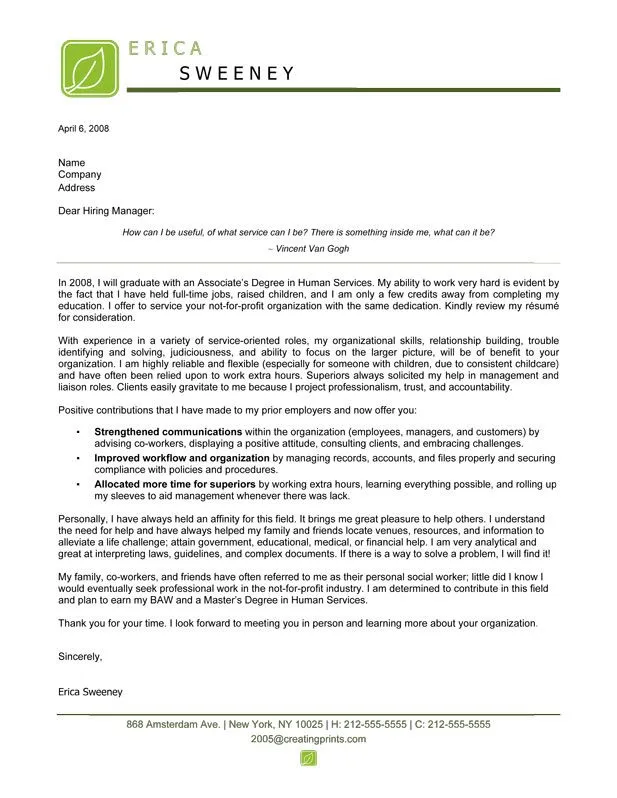
A well-formatted cover letter is easy to read and visually appealing. It shows professionalism and attention to detail. Use a clean, professional font like Arial or Times New Roman in a readable size (11 or 12 points). Keep the layout simple with clear sections and ample white space. Avoid overly decorative elements that might distract from the content. The structure should guide the reader through your qualifications and enthusiasm. Effective formatting elevates your cover letter from a mere document to a powerful marketing tool, ensuring that your message is both seen and understood.
Header Essentials
Your header sets the stage. Begin with your full name, address, phone number, and email address. Ensure this information is accurate and up-to-date. This is the first contact the hiring manager will have with you, so it needs to be perfect. Consider using a professional email address. Using a professional header creates a polished first impression and makes it easy for the hiring manager to contact you if your qualifications match their needs. Make sure your header is clear and easily visible.
Contact Information
Double-check that your contact information is correct in the header. Mistakes here could mean you miss out on valuable opportunities. Providing accurate contact information is crucial. It guarantees that the hiring manager can reach you for an interview or to provide further instructions. Verify all details, including phone number and email address, before sending your application. Proofreading can prevent simple yet avoidable issues that may impact your chances.
Date and Recipient Details
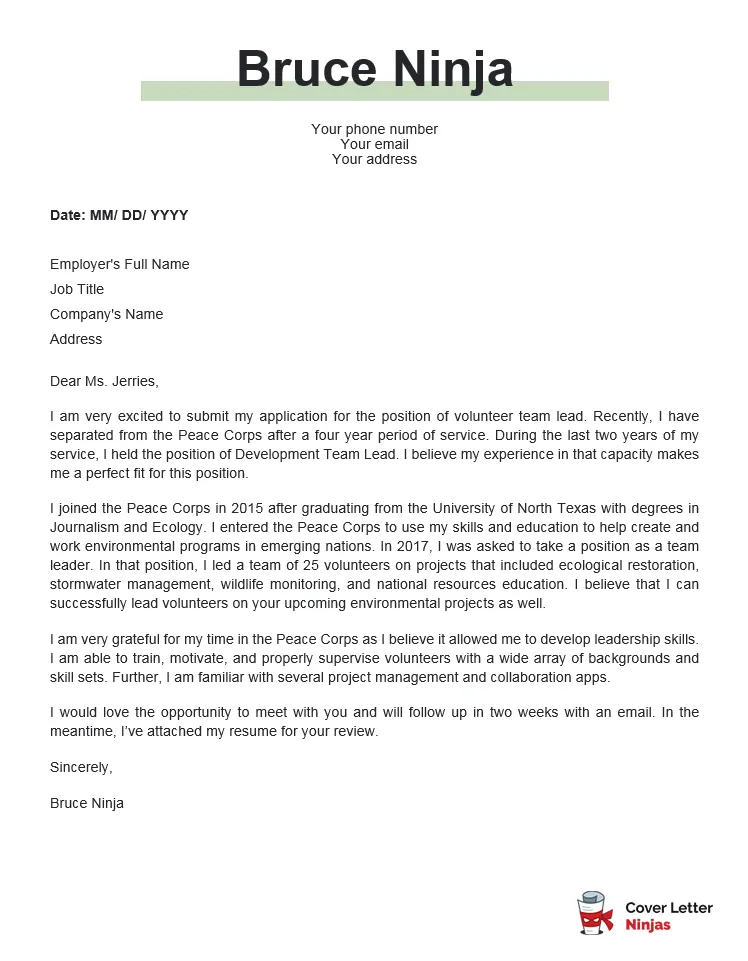
Below your contact information, add the date. Then, include the hiring manager’s name and title, if available, and the organization’s address. Addressing your letter to a specific person shows that you have done your research and taken the time to personalize your application. The inclusion of a precise date is essential. It demonstrates that the document is current and helps maintain a professional appearance. If you can find the hiring manager’s name, using it helps create a personal connection. Doing your research and showing that you care increases the chance of an interview.
Body of Your Nonprofit Cover Letter
The body of your cover letter is where you make your case. It should consist of several paragraphs, each with a clear purpose. This section provides you with the platform to articulate why you are the perfect fit for the position and organization. You should use this section to discuss your skills and accomplishments in detail. The body of your cover letter gives you a chance to impress the hiring manager. It gives you the best opportunity to set yourself apart from the competition.
Opening Paragraph Grab Attention
Start with a compelling opening. Briefly mention the position you’re applying for and how you learned about it. Then, immediately state your enthusiasm and why you’re interested in the organization. Make sure to show that you are passionate about the mission and how it impacts the community. Use strong action verbs and tailor your introduction to the specific role and organization. Your opening sets the tone for your whole letter, so make sure to create a strong first impression. This will help you catch the attention of the hiring manager and encourage them to read more.
Highlighting Your Relevant Skills and Experience
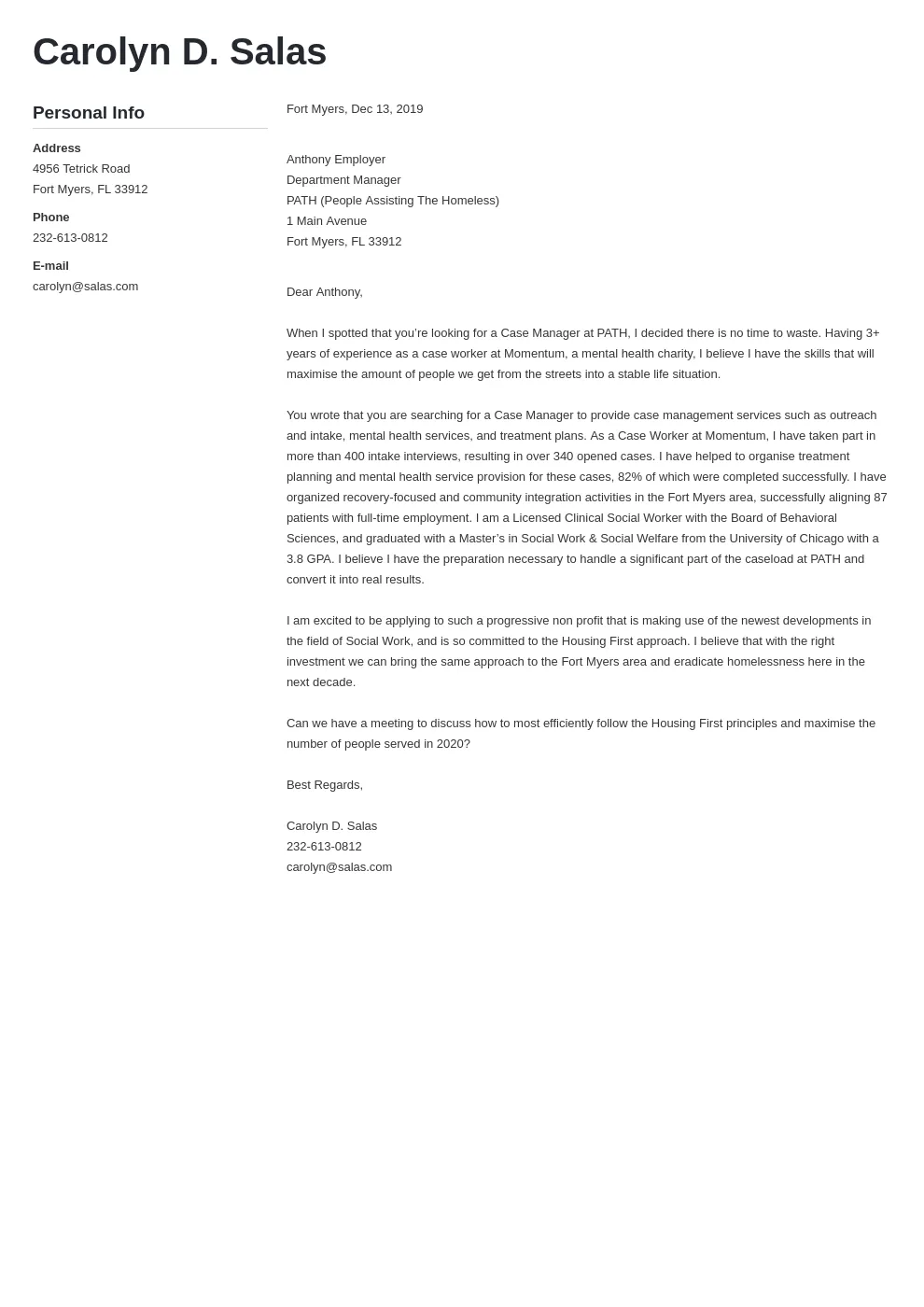
The next section is where you highlight your skills and experience that match the job description. Focus on the requirements listed in the job posting. Provide specific examples of how you’ve used these skills in the past and the results you achieved. Tailor the examples to the organization’s mission. Don’t just list your skills; demonstrate them with concrete examples. Show the hiring manager how you have previously succeeded in a relevant role, and the positive impact you had on the organization. Focus on experiences directly relevant to the position you are seeking.
Quantifying Your Achievements
Whenever possible, quantify your achievements. Use numbers and data to show the impact of your work. Instead of saying ‘increased donations,’ state ‘increased donations by 20% in one year.’ Use metrics to demonstrate the scope of your influence. Quantifiable achievements make your cover letter more impactful and show your accomplishments with supporting data. Using hard data helps to prove your value and potential to the nonprofit.
Demonstrating Your Passion for the Nonprofit’s Mission
Show genuine enthusiasm for the nonprofit’s mission. Explain why you are passionate about the cause and how you align with their values. Mention specific programs or initiatives that resonate with you. This demonstrates that you understand the organization’s work and are committed to its success. Showcase how your values intersect with their work. Mentioning specific initiatives helps you demonstrate that you are enthusiastic and have researched their mission.
Tailoring Your Letter to the Organization
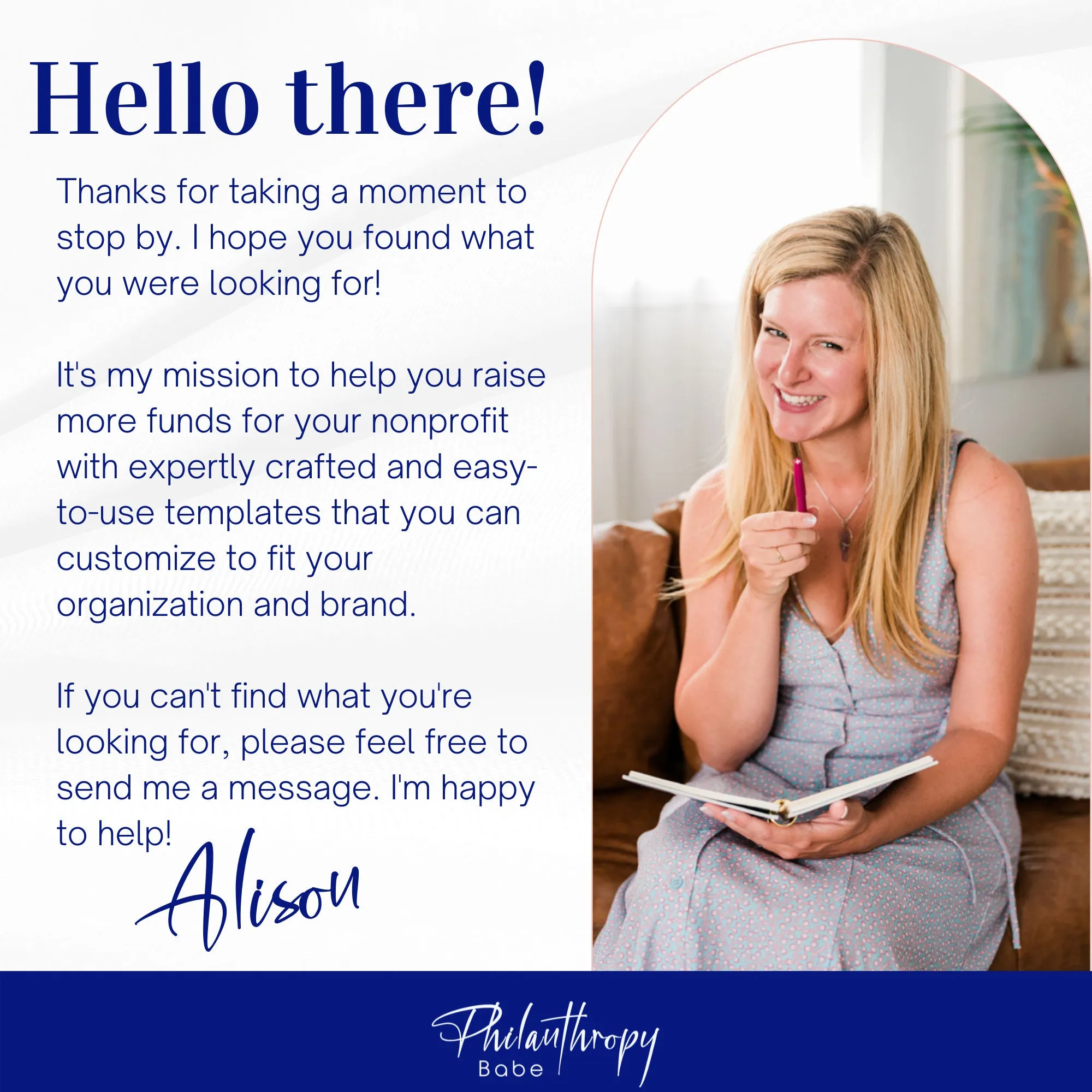
Customize each cover letter to the specific nonprofit and the role. Research the organization’s recent projects, goals, and values. Demonstrate that you understand their unique needs and how you can contribute. Show how your skills and experience align with their mission. Avoid using generic templates. Demonstrating your research will show the hiring manager that you have a genuine interest in the role. Showing that you took the time to customize the letter is an essential step to get you a job.
Closing Your Cover Letter
Your closing should be concise and professional. Reiterate your interest in the position and express your eagerness for an interview. Make sure to thank the hiring manager for their time and consideration. Include a clear call to action to make it easy for the hiring manager. A solid closing leaves a lasting positive impression, encouraging the hiring manager to move forward.
Call to Action
Clearly state your intention to follow up and how you will do so. Indicate that you look forward to hearing from them soon and reiterate your contact information. A strong call to action makes it clear that you’re interested and ready for the next steps. It shows that you are proactive, and this may increase your chances of being invited for an interview.
Thank You and Closing
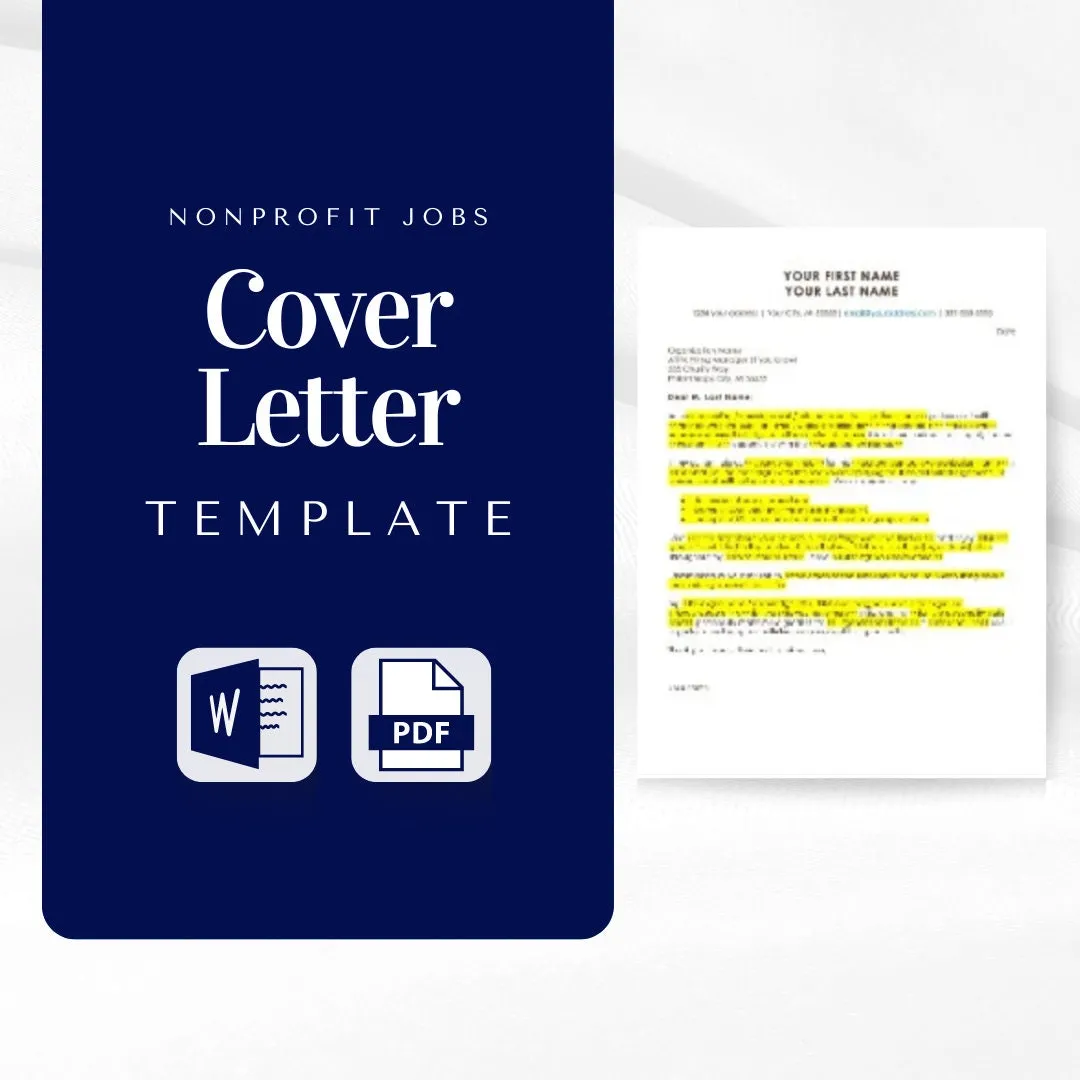
Thank the hiring manager for their time and consideration. Use a professional closing such as ‘Sincerely’ or ‘Best regards,’ followed by your full name. End with your signature if you are submitting a printed copy, or simply type your name if you are sending it electronically. A professional closing and thank you help to polish your cover letter and leave a positive impression.
Proofreading and Editing Your Cover Letter
Before submitting your cover letter, proofread it carefully. Check for spelling, grammar, and punctuation errors. Ensure the formatting is consistent and easy to read. Ask a friend or colleague to review your letter for an extra set of eyes. Proofreading is crucial to make sure there are no errors. Errors can create a negative impression and detract from your qualifications. Taking the time to edit and proofread your letter ensures it reflects your professionalism.
Common Mistakes to Avoid in Nonprofit Cover Letters
Avoid generic cover letters. Always tailor your letter to the specific organization. Don’t repeat your resume verbatim; instead, expand on your key skills and accomplishments. Make sure you don’t use jargon or overly technical language. Make sure you avoid any spelling or grammatical errors. By avoiding these common errors, you improve your chances of making a positive first impression and securing an interview.
Using Keywords for SEO
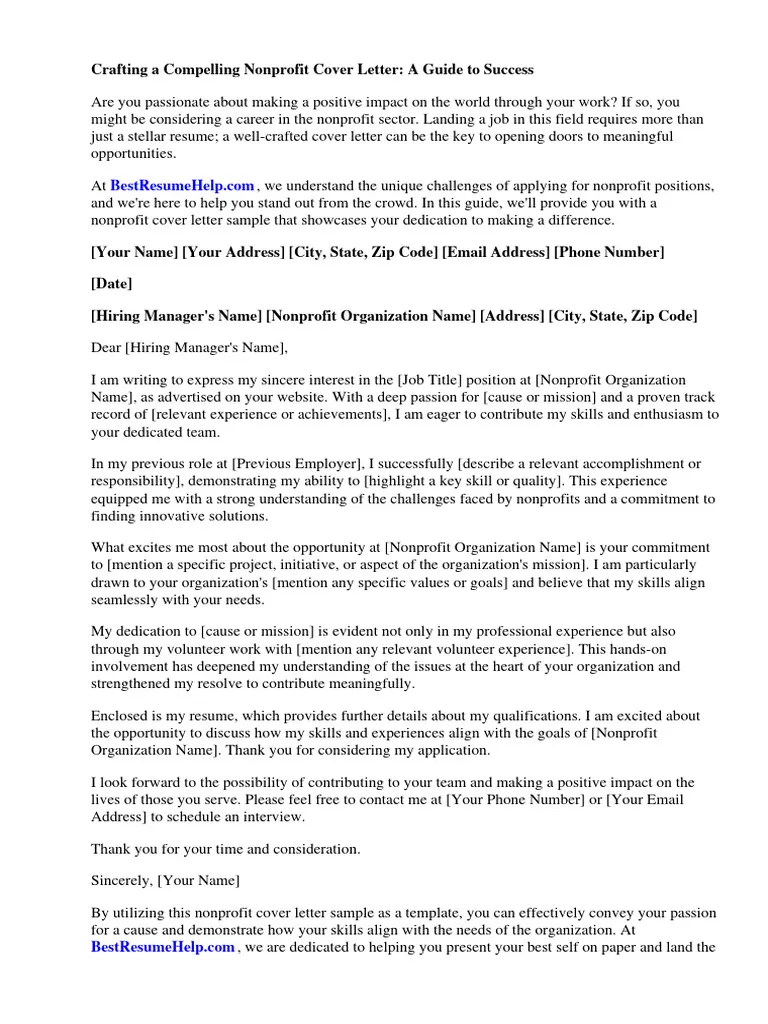
While not directly applicable to a printed cover letter, consider how keywords might be used in your digital presence, such as your LinkedIn profile or online portfolio. Incorporate relevant keywords from the job description to help your profile appear in search results. When crafting your cover letter, you must use the correct keywords in your resume as well as your digital presence. Think about how the organization might search for candidates online. This will increase the chance of being noticed by potential employers. Think about keywords in the context of your online presence.
Example Nonprofit Cover Letter
Here’s a sample structure to guide you. [Insert an example of a well-written cover letter here, showing the various components discussed above]. Reviewing a sample can help you understand how to integrate the elements. This gives you a template to work with, and also shows how to implement the advice discussed. Use the example as a starting point, modifying it to fit your skills, experience, and passion for the specific role and organization. Consider what can make it unique.
Cover Letter for Different Nonprofit Roles
The cover letter should be adjusted based on the role you are applying for. Consider the specific requirements of the position. Make sure to emphasize the most relevant skills. Tailor the content to highlight the skills and experience most relevant to the role. Consider the different types of roles within the nonprofit, such as fundraising, program management, and communications. Your approach should be customized to demonstrate how your skills meet the needs of the position.
Entry Level Cover Letter
For entry-level positions, focus on transferable skills, relevant coursework, volunteer experience, and any internships. Highlight your passion for the mission and eagerness to learn and contribute. Demonstrate your initiative, willingness to learn, and soft skills. Show that you can quickly adapt to the challenges of the role. If you have little experience, then you will have to emphasize education and volunteer experience.
Management Level Cover Letter
For management positions, emphasize your leadership skills, experience managing teams, and achieving measurable results. Quantify your achievements with data and highlight your strategic thinking and ability to contribute to the organization’s goals. Use concrete examples to illustrate your successes. The management letter needs to show how the skills and experience translate into organizational success.
Review and Submit Your Cover Letter
Before submitting, review your cover letter one last time to ensure it’s polished and professional. Make sure your letter has been reviewed by a trusted person who will give feedback. If you can get the feedback, your chances of success may improve. Double-check that you’ve followed all application instructions. Then, send your cover letter and resume. Taking the time to do this guarantees that you present your skills, and makes a positive impact on the hiring manager.
